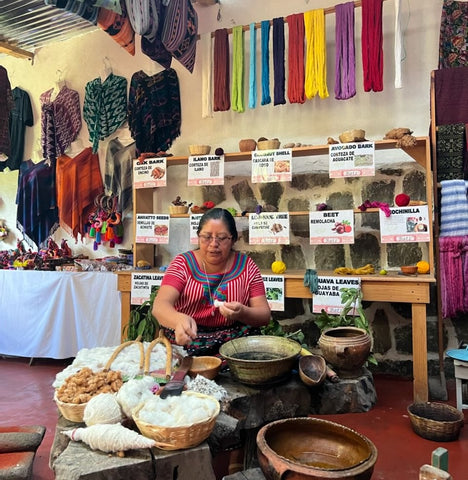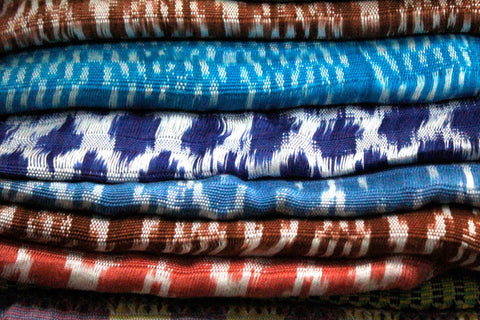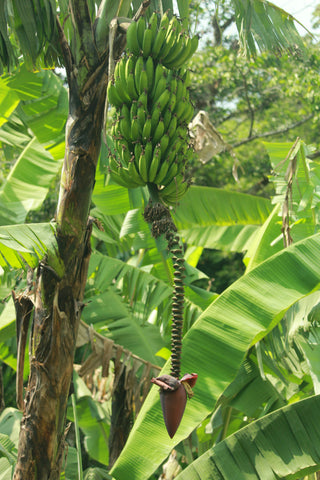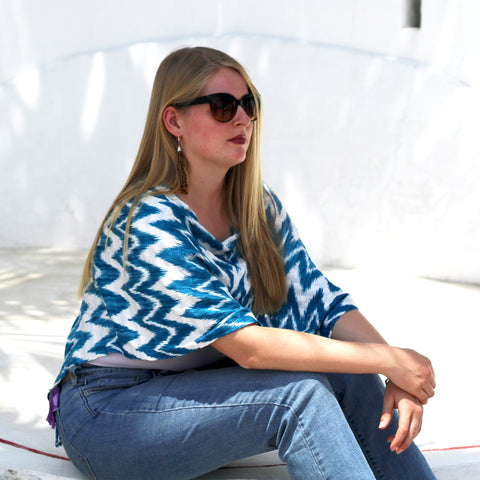
Natural Dyes You Can Try at Home
Natural Dyes You Can Try at Home
It’s a fun experiment to find out the shades you will achieve when dyeing with renewable resources found in nature. We also know that when natural dyeing processes are used, harmful effects to our environment are lessened.
Our artisan, Elena—a weaver who operates her own textile business—is skilled in the art of natural fabric dyeing. She recently demonstrated the age-old craft at the New World Crafts Fair in Antigua Guatemala, at which she used natural materials found in Guatemala to create a variety of colors.

The Maya’s Connection to Color and Dyeing
The ancient Maya were known as the dye masters of Mesoamerica; the colors they produced were extremely long lasting, particularly in comparison to many chemical dye processes used today. Red, white, black, and yellow were significant to the Maya in particular because they represent the four cardinal directions that were important in Mayan ceremonies.
(East: red; north: white; south: yellow; and black: west). Blue is associated with the rain god, Chaak, and is also the color of sacrifice.
The ancient Maya have been involved in textile production for millennia, which includes fabric dyeing as well as spinning and weaving. The art of dyeing was passed down through generations of women, becoming an important part of their culture and community. Materials such as tree bark, seeds, and plants were used for dyes, through a process that would have most likely taken place at a riverbank. To collect the materials for the dye, travel on foot to the water source, and then dye the threads themselves would have been a multi-day process.

Natural Dyeing in Modern Times
Many of the materials Elena uses for dyeing are easy to find in Guatemala today. She uses:
- Avocado bark for dark red
- Cinnamon for brown tones
- Chilca leaves (a flowering shrub) for yellow
- Achiote seeds (a mild, peppery spice) for orange
- Sacatinta/muicle leaves (similar to honeysuckle) for soft blue
- Cochinilla for magenta or pink (insects similar to roly polies)
Try Natural Dyeing at Home
If you want to try natural dyeing at home and don’t have access to these things, don’t let that discourage you. Experiment with turmeric spice for yellow, purchase madder root powder for reds and oranges, or gather acorns (fresh or dried) for brown tones, just to name a few, and follow the process below. The resources at La Creative Mama or Catharine Ellis Textiles can help you get started. For Spanish speakers, gain a deeper understanding from the Universidad de San Carlos de Guatemala thesis, Dyes and Dyeing Methods in Guatemalan Textile Crafts.

Elena’s Ingredients and Tools
- 100% cotton thread, heavier weight
- Lime juice, to help define and lighten the color
- Banana tree stem sap, as a fixative after dyeing
- Large saucepan
- Water
- Rubber gloves
Elena’s Process
To make brown tones: Start by adding 10 to 15 drops of banana tree stem sap to a medium bowl of water. (Elena extracts the sap from the stem beforehand, and keeps it in a jar.) Mix the sap with the water, and let the bowl sit for as long as possible (as least 10 to 15 minutes).
Boil five to six cups of water; add five to six cinnamon sticks to the water (about one stick per cup). Let simmer for about five minutes to release the color. Lower the heat and gently place the cotton thread in the water while wearing rubber gloves. (Note: for brighter colors like red, Elena adds a few drops of lime juice to the water. But this step is not necessary for brown tones.)
After one minute, remove the thread from the water. Wring out the excess water. Place the thread in the bowl containing water and sap. (This fixes, or sets, the color.) Spread out threads to dry naturally.

Photo by Jeremy Boley on Unsplash
After the thread is dyed and dried, Elena can weave them into ponchos, scarves, blouses and more. Check out her naturally dyed and handmade Jaspe Ponchos, shown here and sold in our online store.


